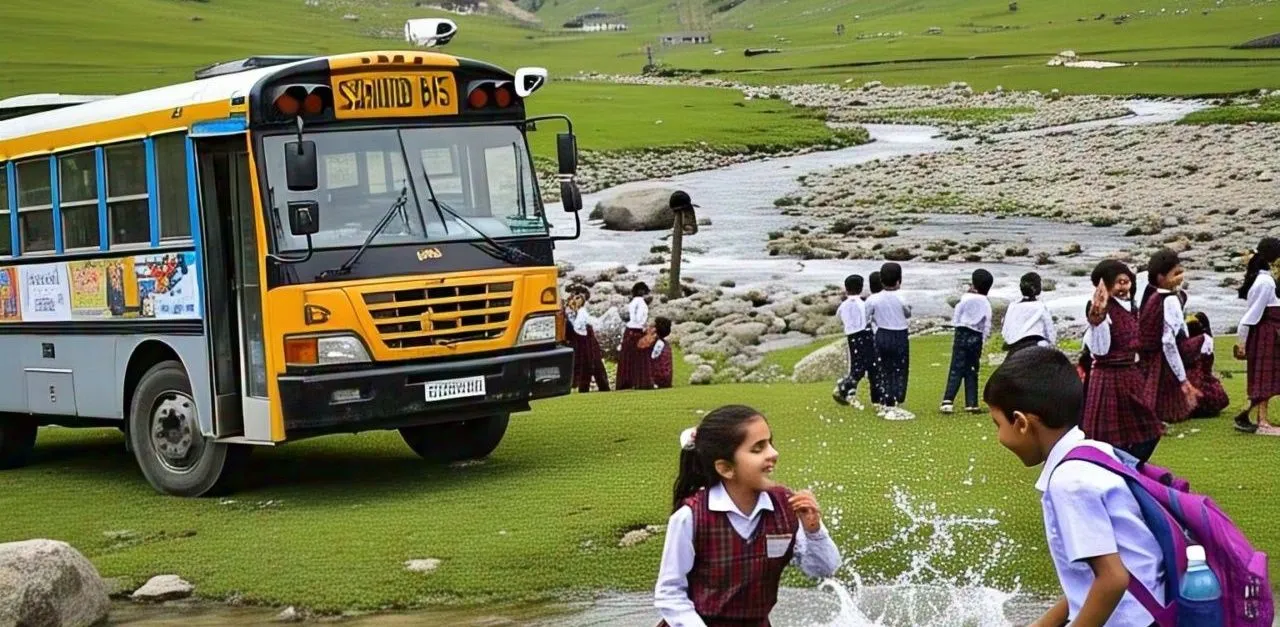A school picnic is not just a break from books. It is a day children carry in their memories long after the school bells fade. For students in Kashmir, picnics mean something even deeper.
They are a brief escape from routine; a reunion with nature; and a rare day of unfiltered laughter against the backdrop of mountains, meadows and rivers. However, in the wake of a recent tragic accident involving a college bus en route to a picnic, where two young girls lost their lives, this unforgettable tradition has entered a phase of quiet pause.The government, in response, has understandably introduced restrictions on school picnics.

While such measures are rooted in concern and caution, the moment also calls for a broader conversation—not just about risk, but about responsibility.Kashmir is a landscape of breathtaking contrasts. Its beauty is appealing, but its roads can be unforgiving.
Zigzagging curves, unguarded bends, seasonal landslides and unpredictable weather make many routes intrinsically challenging. A school bus filled with enthusiastic students can quickly become vulnerable on terrain that demands more than routine driving: it demands precision, preparedness and planning.This is not just about one incident.
It is a reminder that our infrastructure must evolve alongside our aspirations. If we want our children to enjoy the natural heritage of Kashmir, they must also be assured of safe access to it.While temporary restrictions give space for reflection, the long-term solution lies in strengthening systems that make travel safer.
Many interior routes in Kashmir are poorly maintained, lacking essential safety features like guardrails, signage and routine checks. Seasonal repairs are not prioritized, especially on frequently used picnic routes.That’s why approvals for school travel should be route-specific, based on real-time weather and road conditions.
There is need to declare certain high-risk terrains as “No Travel Zones” during specific months. Popular picnic destinations often suffer from congested traffic, particularly due to unregulated tourist vehicles. Introducing dedicated time slots or separate roadmap for school buses during peak picnic seasons can reduce risk.
Besides, there must be a mandatory inspection system for school buses, ensuring all vehicles meet safety standards before being approved for student travel. Only experienced drivers trained in hilly terrain should be assigned for picnics involving students. School buses should be equipped with CCTV cameras and GPS tracking to provide real-time monitoring and enable swift emergency responses.
First-aid kits, fire extinguishers and documented emergency protocols should be standard in all picnic vehicles. Vehicle size and student distribution should be optimized: smaller groups in well-equipped and maneuverable smaller vehicles are safer, allowing for easier supervision and rescue if required.Schools must submit pre-approved itineraries detailing emergency contacts, route plans, contingency protocols and on-board safety kits.
Prior to departure, pre-trip briefings should be conducted for students and staff, covering basic safety instructions and expectations. Schools should also coordinate with local administration and nearby health facilities at the picnic destination, ensuring help is within reach if needed.Students must be taught basic safety habits, such as emergency behavior and how to stay calm and alert in unexpected situations.
Psychological preparedness can also be built through simple orientation sessions prior to travel.Most importantly, to minimize long-distance travel risks, the best that can be done is that schools should organize community-based picnics—nearby orchards, heritage sites, parks or riversides can offer equally enriching experiences within safer logistical reach. Local explorations can maintain the spirit of outdoor learning while reducing travel dangers and fatigue.
Kashmir is brimmed with beauty even within walking distance of many schools. Encouraging nearby, well-known locations for educational or recreational visits can reduce travel-related risks while preserving the essence of outdoor learning.Of course, the decision to restrict picnics, though temporary, reflects a compassionate response to a shared tragedy.
But let this moment not lead to permanent fear or disengagement. Instead, let it serve as a starting point for reimagining safety as a collective goal—shared by administrators, school authorities, parents and traffic police department alike.We owe it to the memory of those two deceased college girls, and to every child who dreams of a day spent under the open sky with school buddies and teachers, to not just preserve the joy of school picnic, but to make it stronger, safer and more inclusive.
The post Picnics, Promises and Precautions appeared first on Greater Kashmir..
Politics

Picnics, Promises and Precautions

This is not just about one incident. It is a reminderThe post Picnics, Promises and Precautions appeared first on Greater Kashmir.















